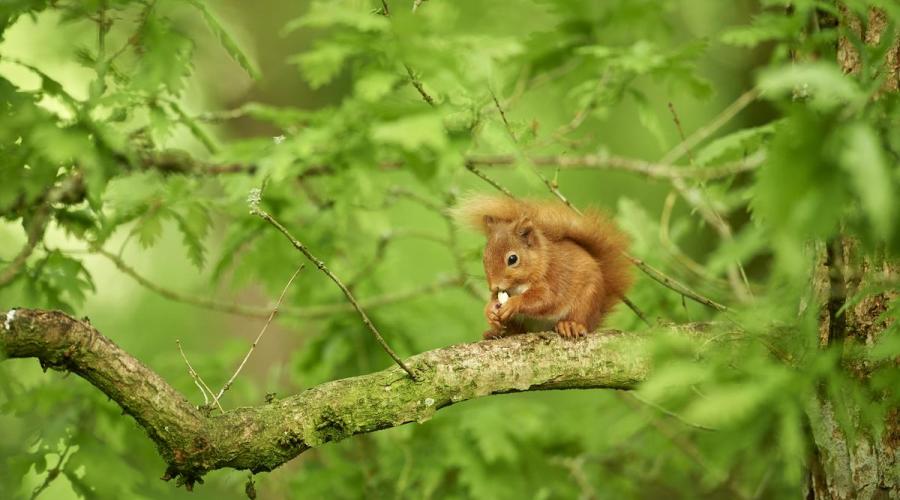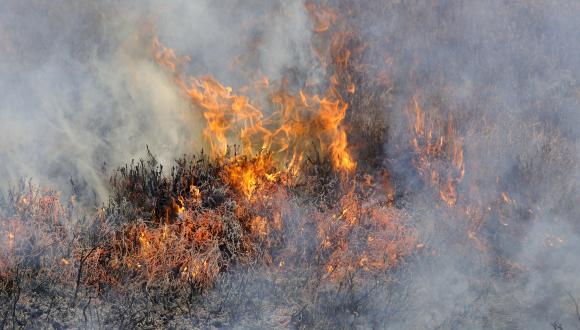
State of Nature report shows Scotland's wildlife continues to decline
27 September 2023
State of Nature Partnership news release
- New landmark report reveals 1 in 9 species is threatened with national extinction
- State of Nature, the most precise scientific report on Scotland’s nature, shows a 15% decline in average species abundance across closely monitored wildlife since 1994. In the last decade alone, 43% (172) of the species have declined strongly.
- Some of the worst declines were in familiar species such as Swift, Greenfinch, Kestrel, Curlew and Lapwing. While others were in species unfamiliar to most including moths such as Rosy Minor, Satyr Pug and Grey Mountain Carpet.
- Lichens, bryophytes and flowering plants have suffered massive declines in distribution since 1970 – showing the importance of restoring key ecosystems, expanding native woodlands like Scotland’s rainforest, tackling climate change and helping wildlife withstand its effects.
- Scotland’s globally important seabirds are among the biggest concern – declining by nearly half between 1986 and 2019 – before the more recent devastating impacts of Avian Flu.
- Investment in restoring Scotland’s nature will generate green jobs, improve national health and wellbeing, help tackle climate change, build inward investment and reflect our national culture and identity.
Scotland is famous for its spectacular wildlife and wild places, but historic nature loss means it is one of the most nature-depleted countries in the world1. Now a new report, released today, shows that Scotland’s wildlife continues to decline.
One in nine of the species assessed2 (11%) are at risk of becoming nationally extinct. However, this figure is much higher for some groups eg vertebrates (animals with backbones) (36.5%).
Between 1986 and 2019, the abundance index of 11 annually monitored Scottish breeding seabird species fell by 49%3. Importantly, these results pre-date the huge impact of the ongoing outbreak of Avian Flu.
There has also been a decline in the distribution of 47% of flowering plant species, 62% of bryophytes (mosses, liverworts and hornworts) and 57% of lichen species since 19704. This demonstrates huge shrinkage in the number of places where these important plants and lichens are found.
The State of Nature Scotland report is the most precise review of how nature in Scotland is faring. Working with professionals from more than 50 nature and conservation organisations the recent report – which updates and supersedes previous editions in 2013, 2016 and 2019 – uses the latest and best data from monitoring schemes and biological recording centres, collected by thousands of skilled volunteers and professional naturalists, to provide a benchmark for the status of wildlife.
Since systematic monitoring of 407 species began in 1994, the abundance of those species has declined on average by 15%. While some of these species have seen increases5, in the last decade alone 43% (172) have declined6. Since 1994, Swifts, Curlews and Lapwings have all declined in abundance by more than 60%, while Kestrels have declined by more than 70%. Moths such as Rosy Minor, Satyr Pug and Grey Mountain Carpet have all declined by more than 90%.
Some of the species that have suffered the biggest declines are less widely known and recognised. However, they form key parts of native ecosystems and are indicators of wider environmental health. Their declines signal deep issues that must be recognised and tackled.
Paul Walton, Head of Species and Habitats for RSPB Scotland, said: “Species are the building blocks of ecosystems. Every time we allow a species to go into decline, or to be lost from our country, we progressively undermine the health and functions our ecosystems. This is a fundamental problem for the living world, including us. Ecosystems provide food, water, air, they underpin the economy and give us health and wellbeing. The State of Nature report shows that not only is Scotland one of the most nature-depleted countries in the world due to historic losses, but that we are still losing nature now. The findings should be a further wakeup call that, despite extraordinary efforts across our society to restore ecosystems, save species and move towards nature-friendly land and sea use, there’s much more we need to do to halt and reverse the declines. Thankfully, there are straightforward solutions and plenty of opportunities for the Scottish Parliament to make a difference in the coming months. Our nature is declining, but Scotland still has incredible natural treasures, deeply embedded in our culture, that we must urgently conserve and restore. We must take these opportunities before it’s too late.”
Professor Colin Galbraith, Chair of NatureScot, said: “Scotland is rich with passion, endeavour and concern for our natural world and, as we work tirelessly to tackle the nature-climate emergency, it is clear that ambition for landscape-scale, collaborative conservation efforts has never been so vital. The State of Nature report is evidence that Scotland’s nature is in crisis, but it also inspires us with what can be achieved by farmers, foresters, communities, charities and scientists when we all take the urgent action needed to protect and restore our ecosystems and species before it is too late.”
Centuries of habitat loss, over-exploitation, the intensification of farming, development, invasive species and persecution (killing of wildlife) means Scotland is one of the most nature-depleted countries in the world, ranking 28th from bottom out of more than 240 countries/territories in terms of the biodiversity it has remaining1.
The evidence, from the last 30-50 years, presented in the State of Nature report, shows how our management of land and seas, climate change, pollution and invasive non-native species are all causing ongoing nature loss.
While 18% of Scotland’s land is currently protected, just 65.2% of the features for which these areas are protected were in favourable condition in the most recent assessment, down from 67.5% in 2007. While, in the most recent condition assessment, just 3% of native woodland was in favourable condition. Furthermore, the blanket bogs of Caithness and Sutherland store 400 million tonnes of carbon (double that stored in the UK’s forests and woodlands combined); Scotland’s peatlands extend much further, but 80% are damaged and releasing carbon equivalent to an estimated 13% of Scotland’s terrestrial emissions. Improving and expanding native woodlands and restoring peatlands can address the nature and climate emergency.
Despite moves in recent years towards more nature-friendly land and sea use, just 20% of Scotland’s farmland is currently in the Agri-environment Climate Scheme. The best available information suggests that nature-friendly farming needs to be implemented at a far wider scale to halt the decline in farmland wildlife and help Scotland reach net zero, while ensuring we can meet future needs for food, energy and fuel. Nearly three quarters of Scotland’s land is farmed, meaning there are significant opportunities to achieve this.
On a more positive note, the report also reveals that communities, conservation projects and legislation can have a positive impact on nature and the wider environment. Numbers of the rare and critically endangered Pine Hoverfly have increased thanks to population reinforcement; Great-crested Newts have benefited from pond creations by farmers and foresters; Water Voles have recolonised areas in which invasive non-native America Mink have been controlled; numbers of critically endangered Flapper Skate are increasing thanks to better fisheries management and Marine Protected Areas.
Furthermore, one of the species that has seen a massive increase in Scotland thanks to conservation efforts is the White-tailed Eagle – not only restoring an important missing part of Scotland’s wildlife and culture, but one that brings millions of pounds to the Scottish economy through tourism.
More restoration projects, for native woodlands, peatlands and species-rich grasslands are now getting underway too. If these projects can be scaled-up to work across Scottish landscapes, not only will restoring these habitats have clear benefits for nature, but they can help us mitigate and adapt to the impacts of climate change and provide other benefits to people including for health and wellbeing.
Often the solutions to the challenges facing nature are known, there just needs to be sufficient funding and support, including investing in the jobs and skills needed, to deliver solutions at scale and speed.
To download a full copy of the State of Nature Scotland 2023 report and to find out what you can do to help, visit the State of Nature website.




